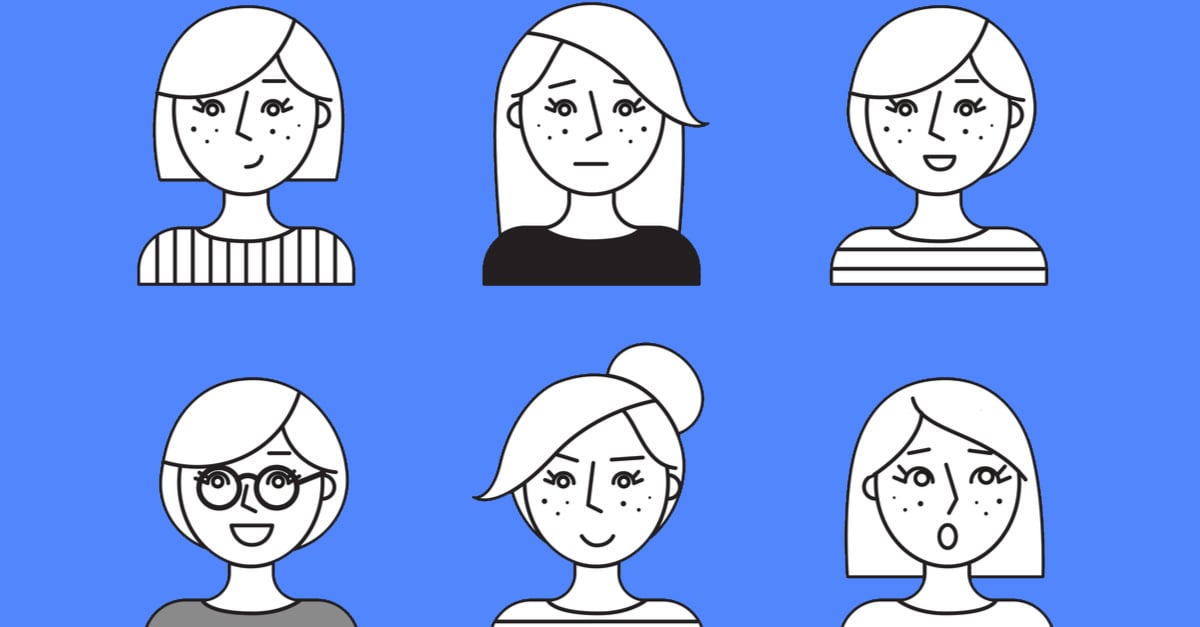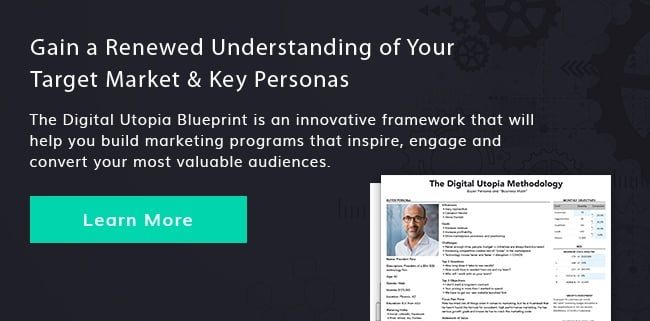How You Should be Using Buyer Personas to Increase Your ROI
by Frank Cowell | Updated Jan 22, 2022
We’ve all experienced that particular photo, story, ad, video, or song that seems to speak directly to us for whatever reason. Maybe it tugs at our heartstrings or makes us think or makes us laugh. Whatever the reason, it connects with us emotionally. We remember it, we think about it, and chances are we want to be exposed to more photos, stories, ads, videos, or songs just like it.
It’s as though whoever created the content was speaking right to us, as though he or she knew the exact buttons to push . . . and chances are that person did—and did so by clearly defining a target buyer persona to help shape his or her marketing efforts.
Buyers Are People, Not Groups
As a marketer, once you begin to think of your buyers as individuals with needs, desires, fears, challenges, and real lives rather than faceless, nameless mass “markets” or groups, you will become better able to concentrate your efforts and messaging on the specific paint-points likely to compel these individuals to buy from you.
Suddenly, all of your low quality or non-existent leads become bona-fide prospects.
Using Target Personas
A target persona is not a group or demographic. It’s a detailed, fictitious description of the person you’re selling to, complete with age, gender, marital status, job tile and role, a discussion of his or her motivations, values, and worldview, and even a name!
Target personas can help you decide the best methods for reaching your buyers.
- Will you market through TV, print, radio, social media, other online venues, or all of the above?
- What language resonates with your target persona best? What keywords grab his or her attention?
- How can you continue the sales conversation after the initial contact to build trust and eventually close the deal?
- What kind of content will your target persona find most valuable and be willing to share freely?
It is very likely you will have more than one target persona if your product or service appeals to a broad enough audience, but the narrower the focus, the better.
The old way of defining your target market, such as “females, ages 16 to 30,” simply doesn’t work anymore (we are not convinced it ever did). For today’s marketing channels, that’s too wide a demographic. You need to be more specific.

To illustrate, the messages and methods you’d use to reach out to a target buyer who is a 16-year old high school girl would vary dramatically from what you’d use to connect to a 25-year old mother of two or a 30-year old marketing director.
- Who is she buying the product or service for, herself or others?
- Does she get her information via social media (and if so, which platforms), through online research, through word-of-mouth, or all (or none) of the above?
- What time of day does she work, shop, research?
- Who does she trust most to recommend purchase decisions —her friends and family, classmates, co-workers, influencer, boss, peer, or some other trusted source?
- What problems, challenges, or pain points does she face?
The list of questions you should ask as you define your target persona is virtually endless, so you’ll want to dig deep. Think as though you are creating a character in a story.
A Big Net Is Not Always Best
Many marketers fear that if they define their target market too narrowly, they’ll eliminate too many sales opportunities. A bigger net always catches more fish, does it not?
Not necessarily, and catching more fish isn’t always best, at least not when you’re marketing. Too many leads, especially too many low quality leads, can divert attention and tax resources.
Let Your Target Persona Be Your Guide
Defining a target persona is not only good for marketing and sales, it’s good for your whole company. A well-defined persona allows you to cut through the chaff, hone your message, and focus on those marketing methods likely to give you your best return on investment. Just imagine being able to tailor your blogs, social media posts, web site content, advertising, customer service responses, sales messages, product development, and virtually all other brand touch points to “real” people who are interested in your product or service!
When you speak to people you know will be receptive to your message, you’re almost guaranteed to generate more quality leads, not just numbers. On the other hand, un-targeted marketing fails to reach pretty much everyone and can have a devastating impact on your ROI.
If you are looking to identifying your target persona or just want to reinforce your understanding of your ideal persona. Download the Digital Utopia Methodology Blueprint and use the worksheet to outline your target persona and solidify the role your brand plays in his or her life.









